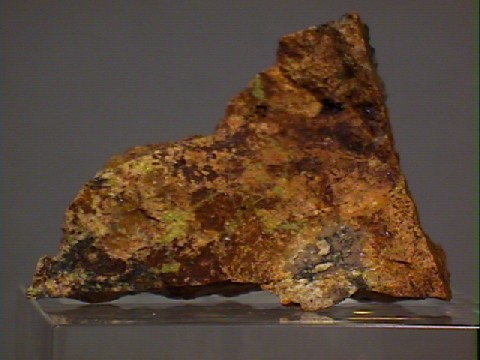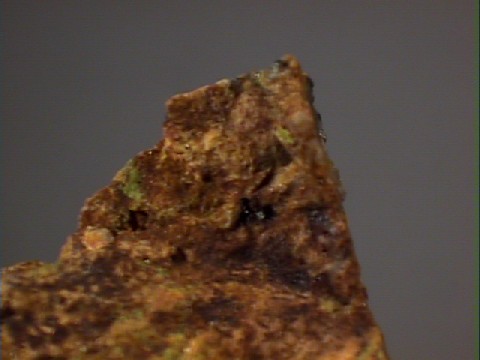 THE
MINERAL HESSITE
THE
MINERAL HESSITE
- Chemistry: Ag2Te, Silver Telluride.
- Class: Sulfides.
- Subclass: Tellurides.
- Uses: As mineral specimens and as a very minor ore of silver and tellurium.
Specimens
Hessite is a telluride mineral, a special group of minerals to collectors.
Other tellurides include
altaite, a lead telluride;
calaverite, a gold telluride;
Hessite is generally gray in color and forms pseudo-cubic crystals despite being monoclinic. Its ability to be cut by a knife or its sectility is diagnostic as well as its associations. Hessite is found in hydrothermal veins with the associated minerals mentioned above.
PHYSICAL CHARACTERISTICS:
- Color is a steel gray to lead gray.
- Luster is metallic.
- Transparency: Crystals are opaque.
- Crystal System: Monoclinic; 2.
- Crystal Habits include pseudo-cubic to prismatic crystals; fibrous and massive forms are also known.
- Cleavage: Indistinct in one direction.
- Fracture: Uneven.
- Hardness is 1.5 - 2
- Specific Gravity is 8.2 - 8.3 (much heavier than average for metallic minerals)
- Streak is gray.
- Other Characteristics: Specimens are sectile.
- Associated Minerals include
gold,
quartz,
altaite,
petzite , sylvanite, chlorargyrite, chlorite,keystoneite , silver, tellurium,coloradoite ,thalcusite ,tetradymite , sphalerite, chalcopyrite, pyrite, galena and other sulfides. - Notable Occurrences include the type locality of Sacaramb (nagyag), Transylvania, Romania as well as San Sebastian and Jalisco, Mexico; Zavodinsk Mine, Altai Mountains, Kazakhstan; Mont Saint-Hilaire, Quebec, Canada and in the United States: Tierra Blanca, Sierra County, New Mexico; Calaveras, Nevada; Cash Mine, Boulder County and Cripple Creek, Colorado; Ross Hannibal Mine, Lawrence County, South Dakota; Tombstone, Arizona; the McAlpine Mine, Tuolumne County and Carson Hill, Calaveras County, California; Eureka Standard Mine, Utah County, Utah and the Flambeau Copper Mine, Ladysmith, Wisconsin.
- Best Field Indicators are crystal habit, locality, color, sectility, lack of good cleavage, softness and density.



